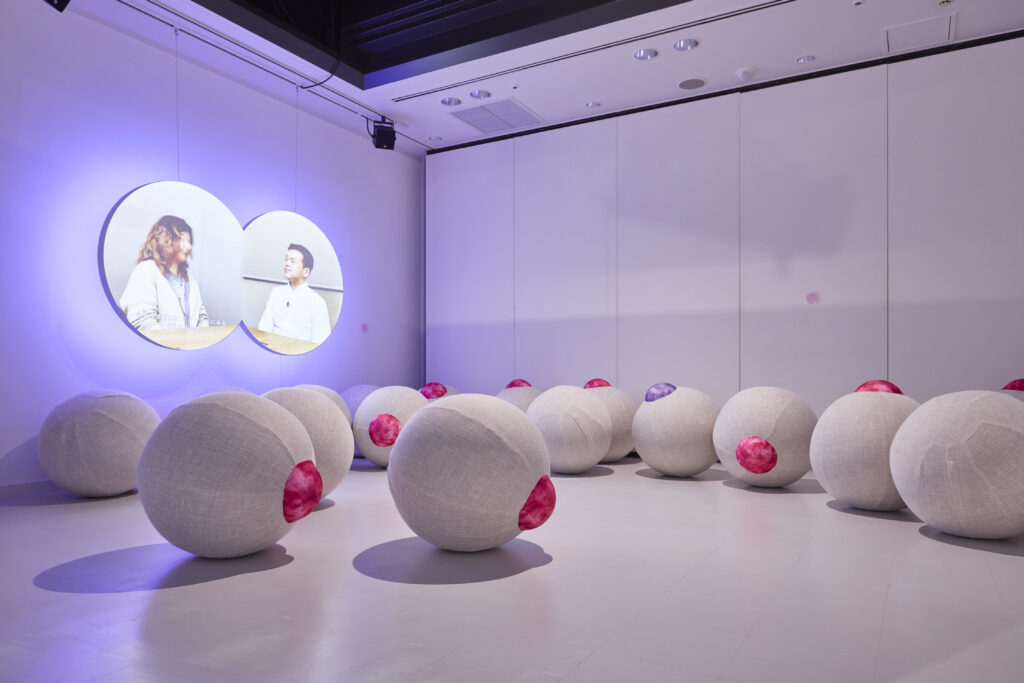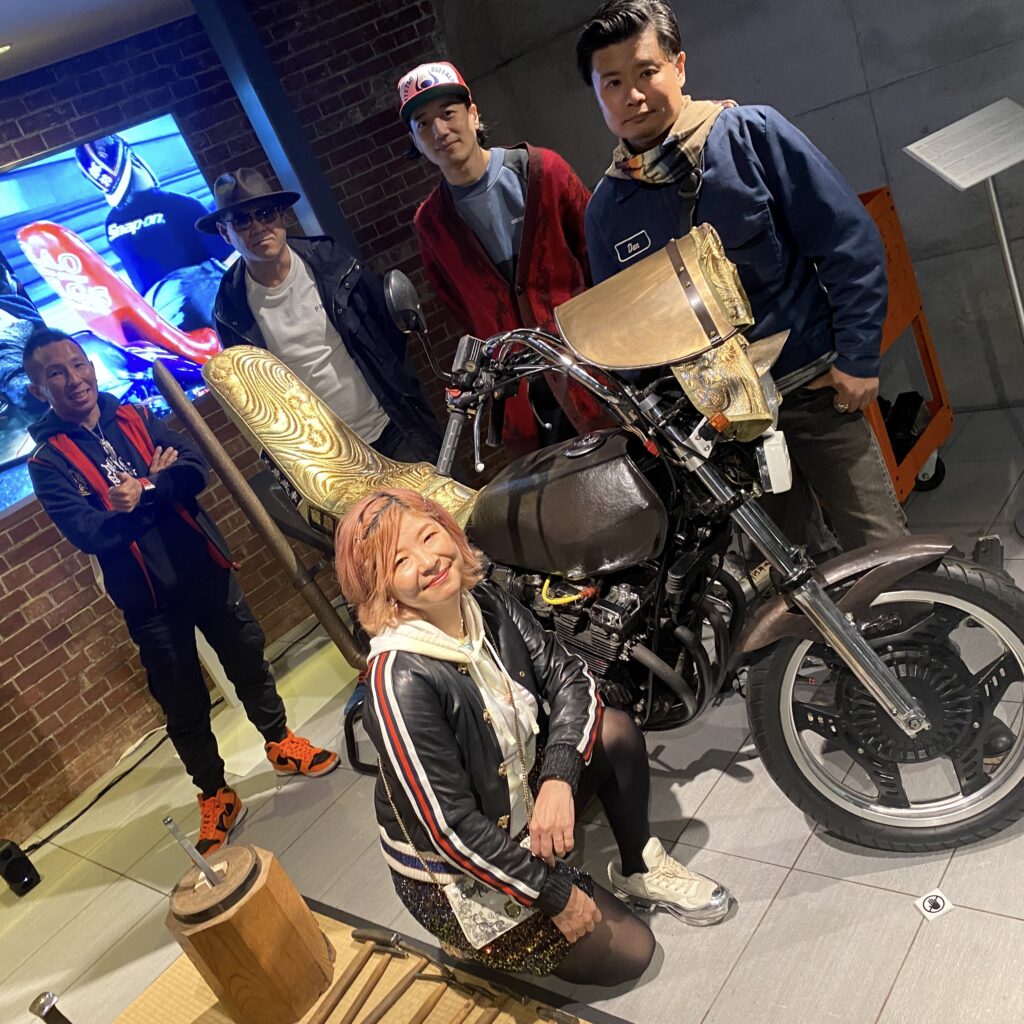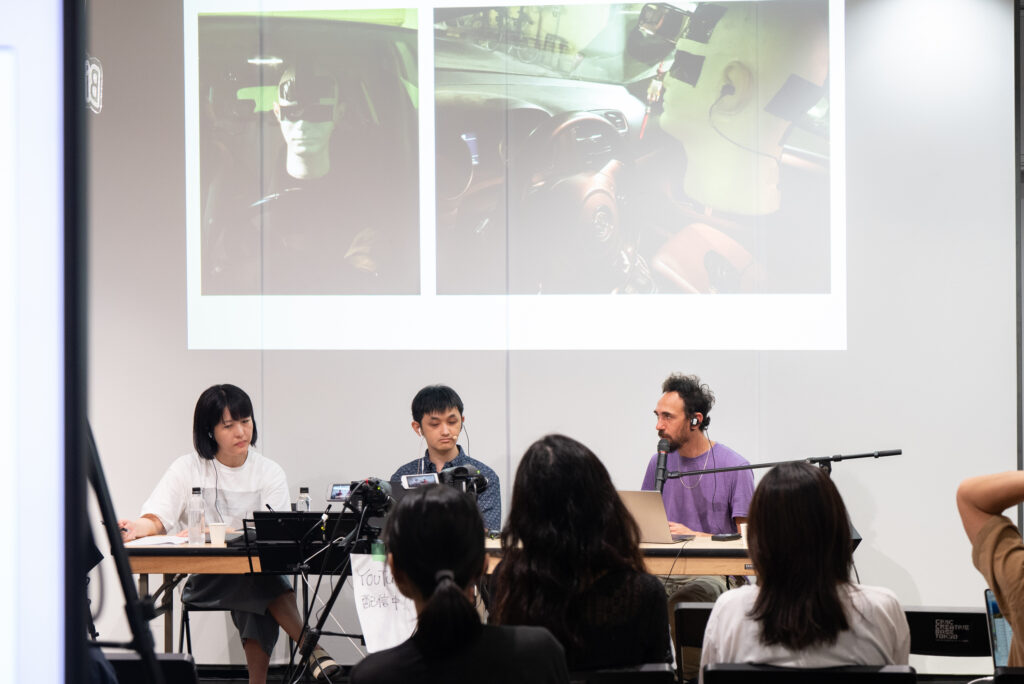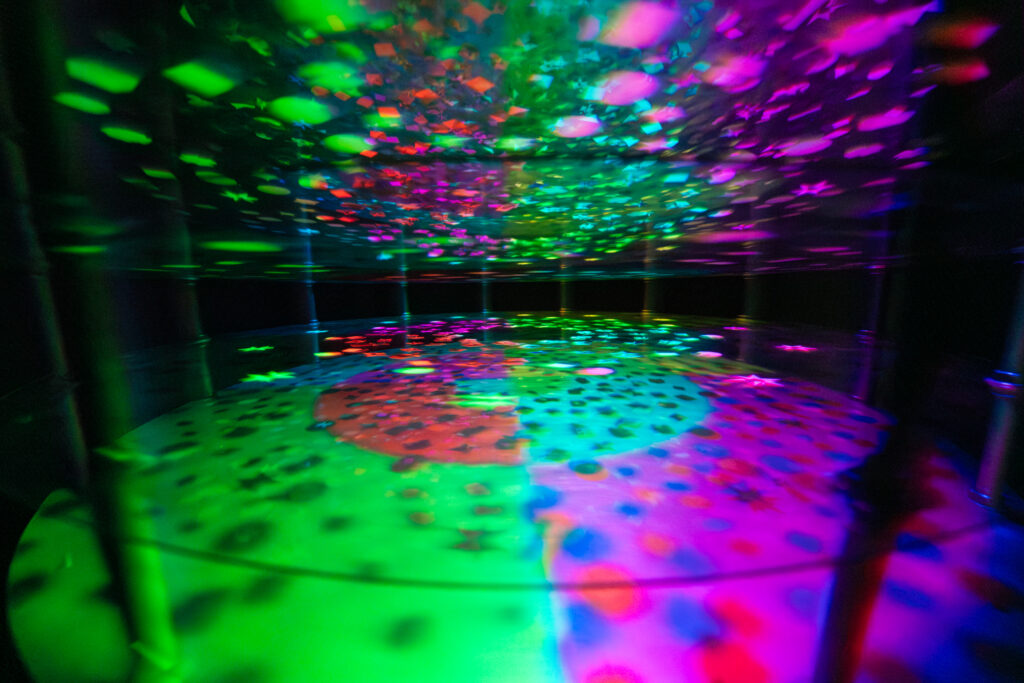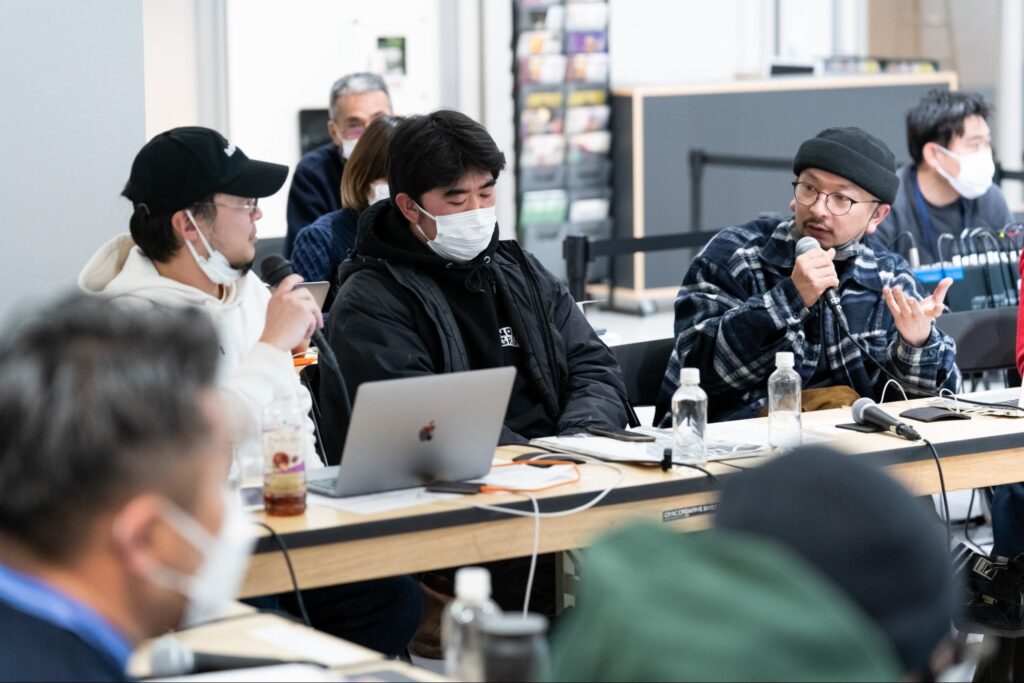On February 15 and February 16, the junior high and high school student workshop “Make, Think, Talk: Artificial Cell Recipes” was held. The workshop was led by CCBT artist fellow Fukuhara Shiho of HUMAN AWESOME ERROR and Japan Agency for Marine-Earth Science and Technology senior researcher Kuruma Yutetsu. Over the course of experimenting with making artificial cells and taking part in a discussion, participants reflected on the meaning of human life.
This report outlines the workshop and discussion content as well as the artist’s thinking behind the event.
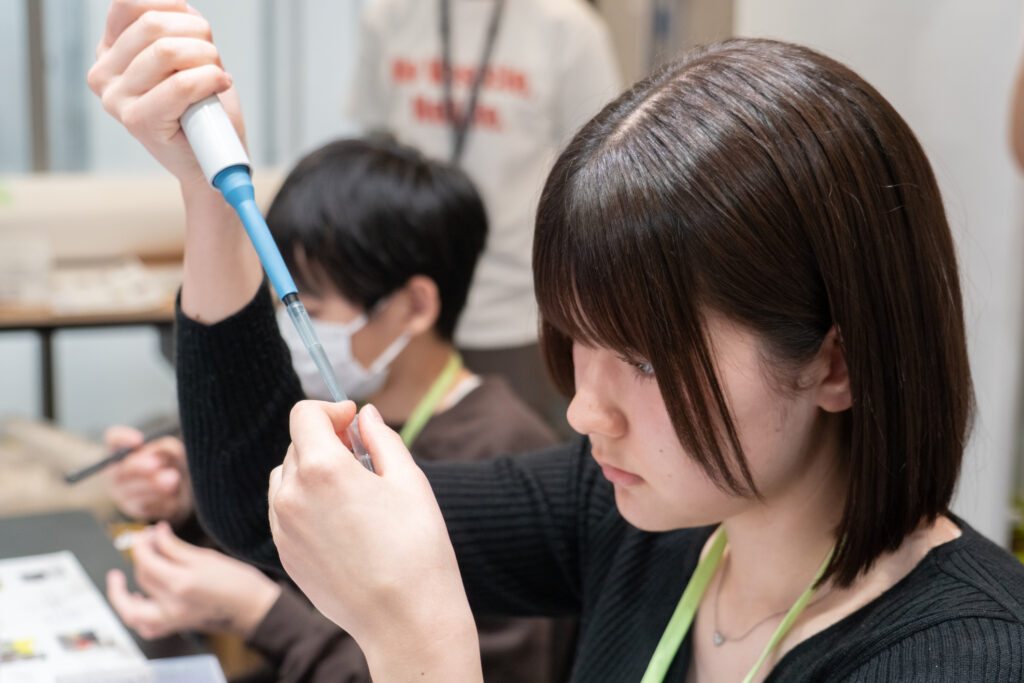
1. Introduction
CCBT is a forum for encounters with digital creativity, hosting workshops led by experts from various fields as well as learning events about programming and crafts and design using the equipment in its Tech Lab. Through its workshop program, CCBT aspires to improve citizen literacy and fluency for the future while providing opportunities for people to obtain skills in making things and experimenting.
“Make, Think, Talk: Artificial Cell Recipes” was led by CCBT artist fellow Fukuhara Shiho of HUMAN AWESOME ERROR and Kuruma Yutetsu, a scientist who specializes in artificial cells and a senior researcher at the Japan Agency for Marine-Earth Science and Technology.
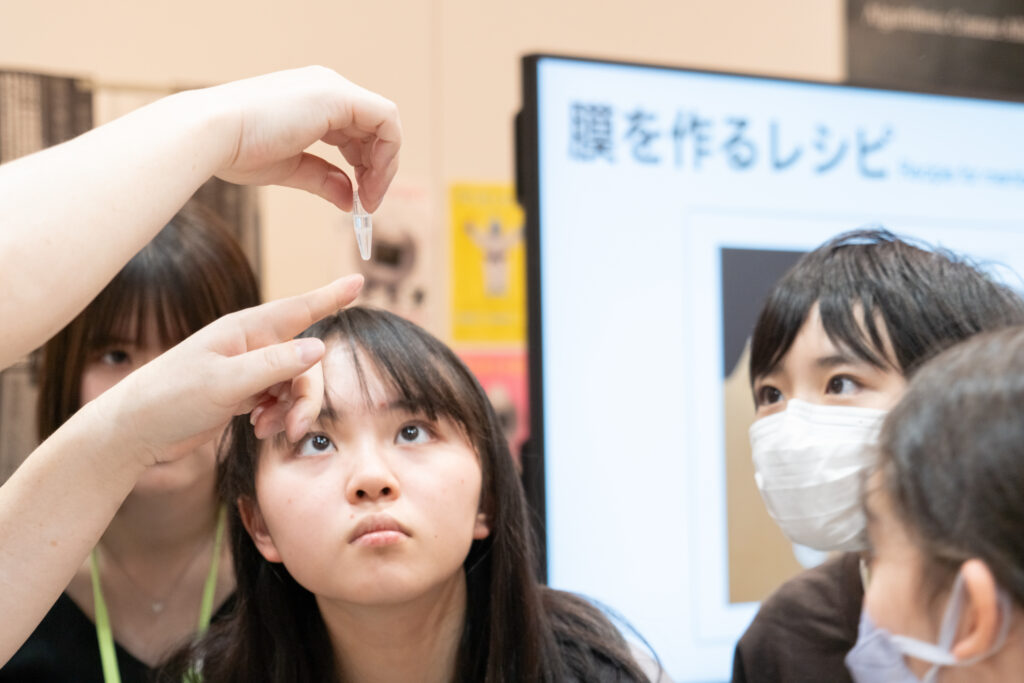
2.Workshop Structure
- Lecture on Cells
- Making Artificial Cells
- Lecture on Super Cells Infinite Exhibition
- Discussion
- Wrap-up
2.1 Lecture on Cells
The workshop began with a lecture by Kuruma about cells and artificial cells. He described the complex structure of cells and their self-replicating qualities, and also explained about self-replicating cancer cells by comparing them with normal cells. He discussed the differences between cells and artificial cells, and introduced the differences in cell membrane functions.
Kuruma explained the properties of cell membranes. Cell membranes are made from lipids, which are composed of molecules that both do and do not dissolve in water. As such, adding water to lipids forms a capsule-like structure. The experiment to create artificial cells in the workshop made use of this property.
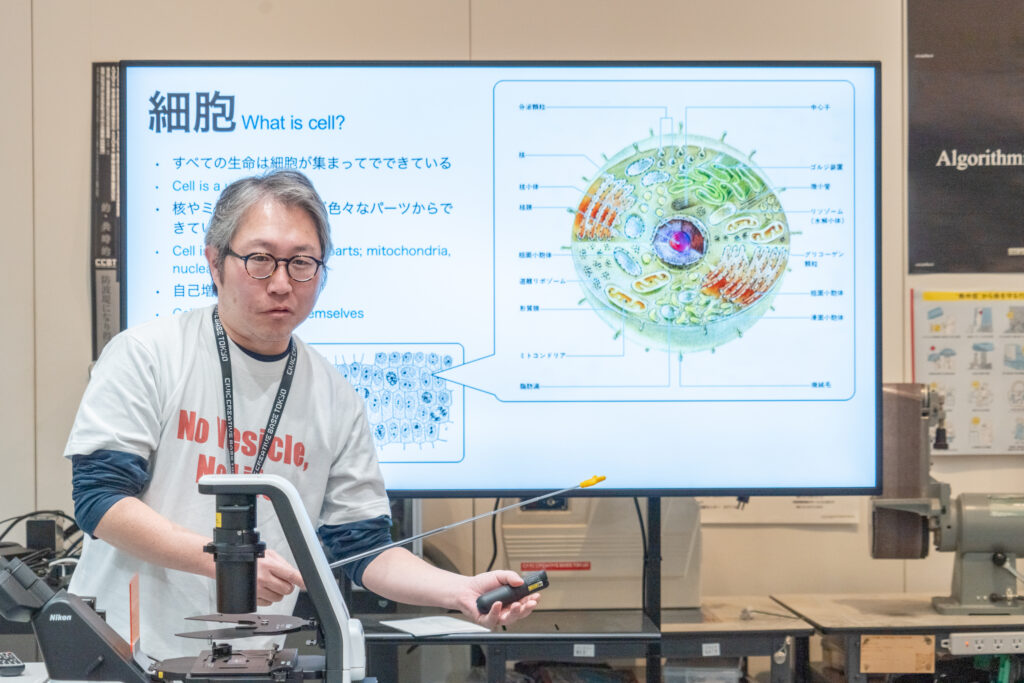
2.2 Making Artificial Cells
The experiment was carried out over a total of nine stages, using equipment such as vortex mixers and centrifuges that are used at universities and other research facilities. As participants conducted the experiment, they learned how to use various tools like pipettes, and observed the cells at the end under a fluorescence microscope. All the participants succeeded in creating round artificial cells.
Another experiment was conducted in which the artificial cells participants created were observed on the same microscope slide as mucosal cells collected from an oral cavity, and the differences between the two types of cell were compared. A worksheet posited two questions: Do you think the cells that you created are alive? Are there any differences between your own cells and the ones you created? Participants wrote down their opinions based on the lecture, experiments, and observations they had made.


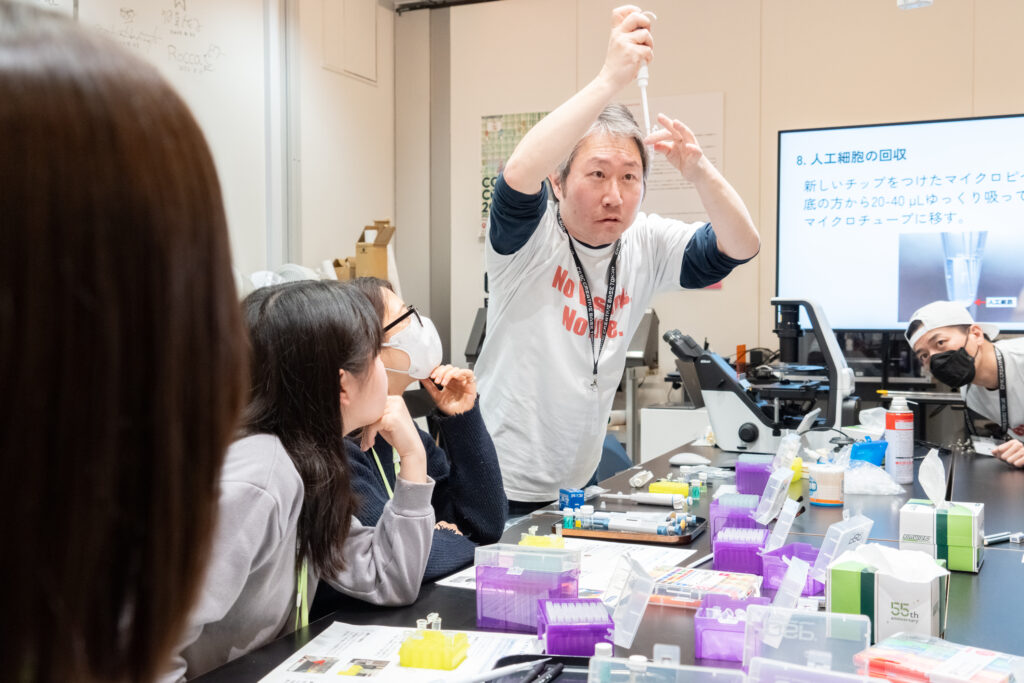
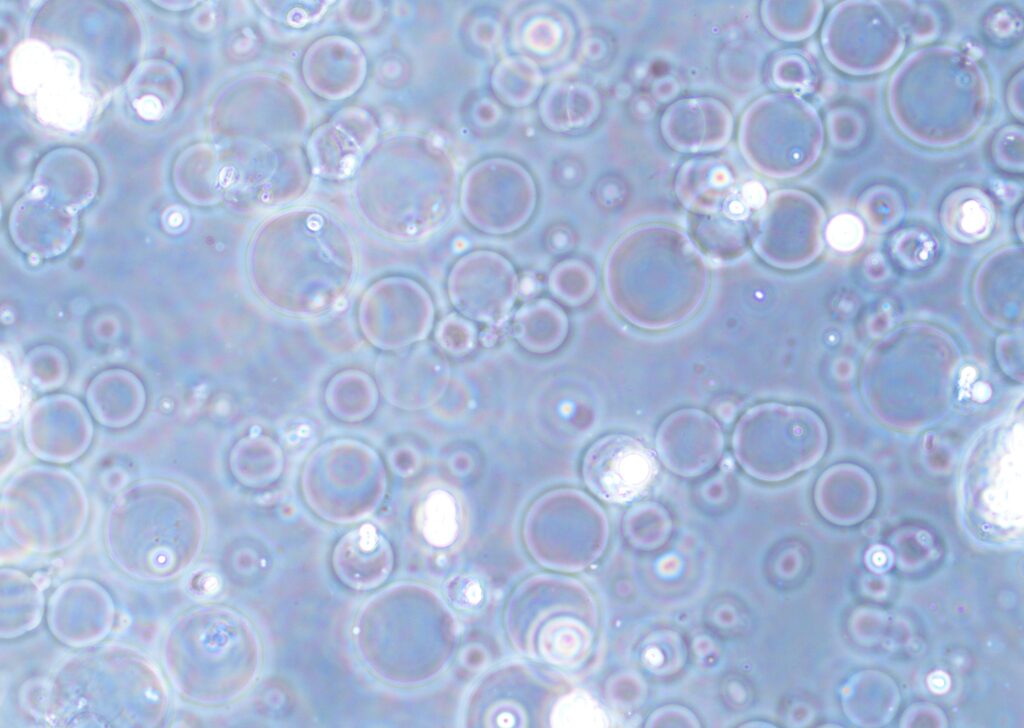
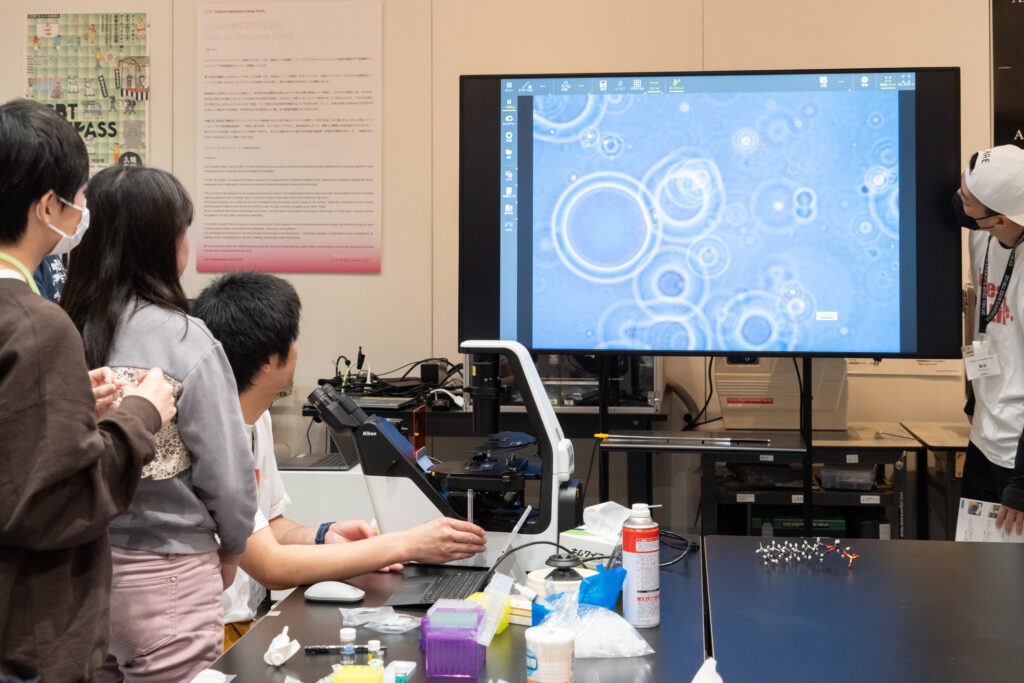
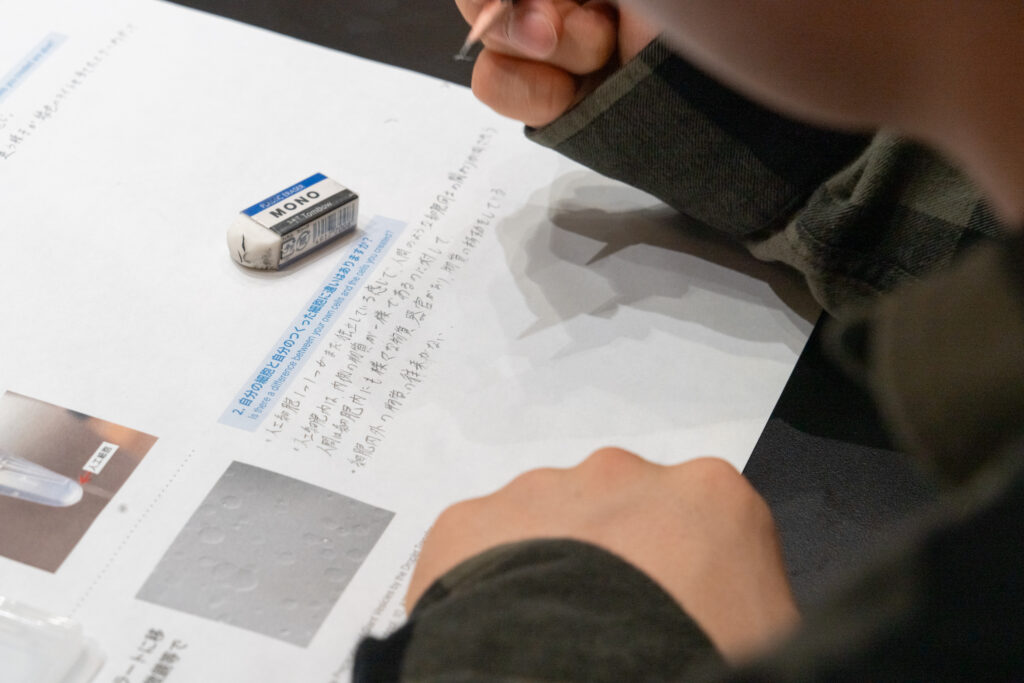
2.3 Lecture on Super Cells Infinite Exhibition
Fukuhara gave an explanation about Super Cells Infinite, an exhibition held by HUMAN AWESOME ERROR from February 11 to February 24, 2025. The Super Cells project was launched by Fukuhara after she was diagnosed with breast cancer, constituting the processes and activitities she undertook to understand the questions that arose from her changing awareness of cancer—the nature of cancer and the mechanism by which everyone produces cancer cells daily—and then to share that openly with others.
In addition to explaining the project, Fukuhara touched on the interactions she had with various hospitals, universities, and other institutions to extract her cancer cells as well as the history of research that uses cells taken from humans. As the lecture revealed, these tiny cells invisible to the naked eye contain vast amounts of data, and so dealing with human cells involves the ethical issue of how we handle personal information.
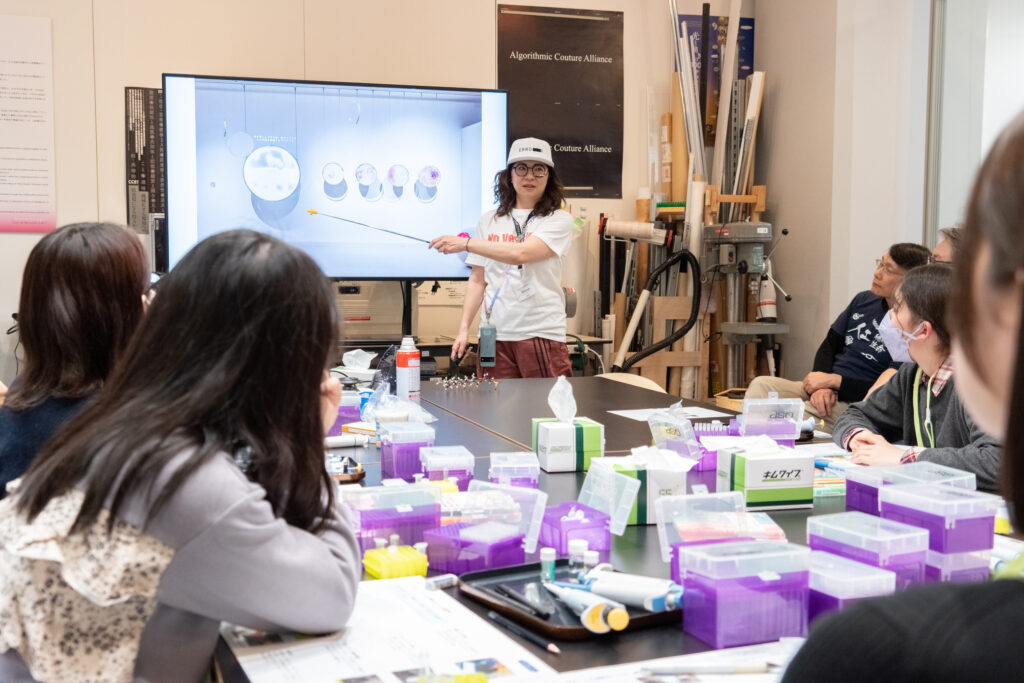
2.4 Discussion
Participants divided into two groups and exchanged opinions on the questions from the worksheet in the 2.2 stage of the workshop: Do you think the cells you created are alive? And are there any differences between your own cells and the ones you created? In response to the first question, views diverged, with some participants believing the cells to be alive and some believing not, and others unable to say either way.
Here are some examples of the participants’ opinions.
– “The artificial cells I created seemed to vibrate a little. If we assume that moving on their own is a sign of being alive, then vibrating means they have energy, so I think that the artificial cells that appeared to vibrate are alive.”
– “At this current stage, the cells don’t have any function, so I can’t say that they’re alive, but it feels like I’ve made something that could become life in the future.”
– “According to the arguments introduced in the first lecture, artificial cells have no function, so I don’t think they are alive.”
From these various opinions, the questions under consideration expanded to encompass how we define a living and nonliving state, and what it is to feel alive.
Regarding the second theme of differences between your own cells and created ones, the participants considered these differences in terms of cell function, based on the differences they found over the course of the observations they did and the insights they gained from the lectures. They focused on membranes and came to a renewed recognition of the role living cells play in separating the inside and outside. “The artificial cells we created today have no function,” participants remarked, “but if you think of them as an advanced version of living cells, they are not wholly different.” In terms of a sense of ownership of the cells, including whether they can think of it as their own, opinions were expressed from slightly different angles on the same perspective.
Following the discussion, representatives from the groups shared what they had talked about.
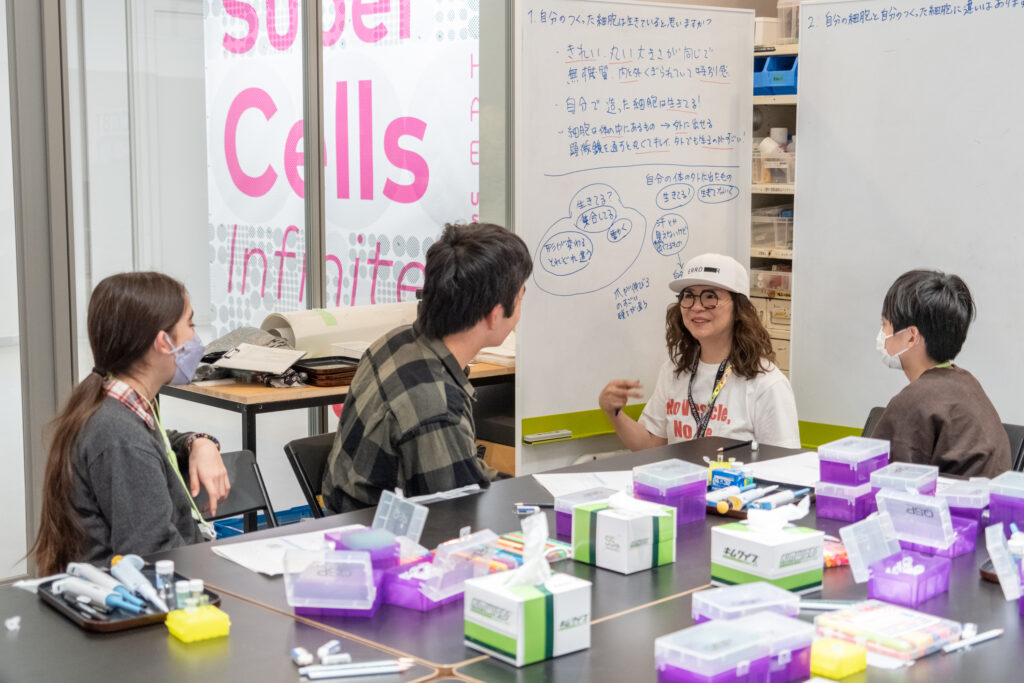

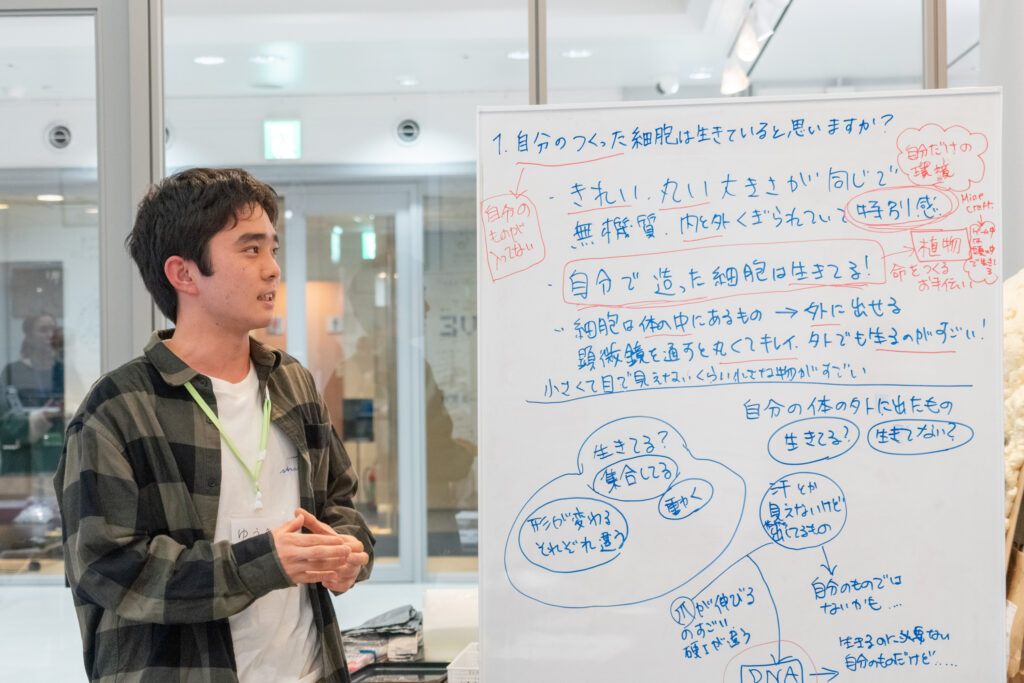
3. Participant Feedback
In the questionnaire given out after the workshop, participants commented that they had gained a deeper understanding of what it means to be human and that they were glad to discover how to describe what being alive is by thinking about the differences between living and nonliving through dealing with artificial cells in the event. This suggests that participants got to grips with the theme at the core of the workshop, which was to think about our lives.
Participants also indicated an interest in the scientific aspect of the workshop, noting that they were curious about the kinds of changes that would occur if the internal fluid was changed during the experiment. The significance of the discussion was praised, with one participant remarking that though attendees were all from the same generation, their different upbringings and ages meant the experience proved a valuable opportunity for thinking and exchanging views on a topic.
Kobayashi Reina (CCBT)
4. Artist Statement on the Workshop
Super Cell was a series of endeavors related to cancer, attempting to renew on a sensory level how we perceive cancer cells, and cells in general, which are normally invisible to the naked eye. However, there is only so much that one or two people can imagine.
For this project at CCBT, we were very conscious of the need to create a place where the imaginations of various researchers, those affected by cancer, and other members of the general public can all come together. This desire to accommodate a plurality of ideas was the reason that we changed the name of the project from Super Cell to Super Cells.
The workshop in the project was especially aimed at teenagers who were still minors, an age when their knowledge and thinking ability expands rapidly, and yet are prone to constraint by rigid thought patterns.
The artificial cell membranes made according to the “recipes” devised by Kuruma Yutetsu were not only a means of thinking about the cell—the smallest unit of flora and fauna—and the origin of life, but also a canvas for exploring the function of cells.
From an adult perspective, the easiest thing to claim is that an indivisible film of oil does not constitute a living entity. The discussion after the participants had seen and directly experienced the experiments, though, resulted in a wide range of views that far exceeded our original expectations for the event.
We hope that such endeavors will continue to go beyond simple knowledge sharing, and serve as a catalyst for new creativity as individuals’ imaginations intersect.
HUMAN AWESOME ERROR (art collective)
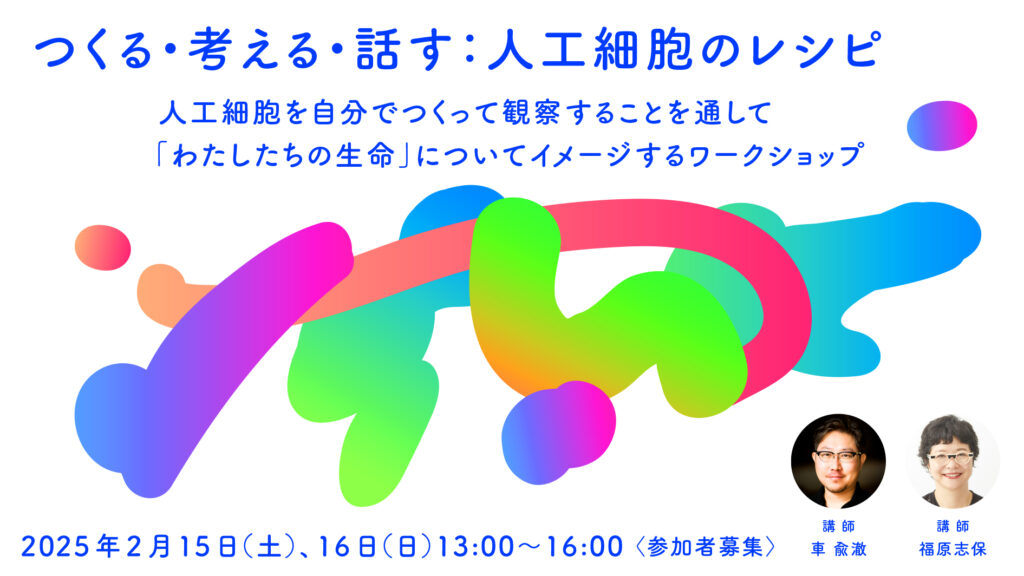
“Make, Think, Talk: Artificial Cell Recipes”
Date: February 15, 16, 2025
Time: 13:00-16:00
Venue: Civic Creative Base Tokyo [CCBT]
Lecturers: Kuruma Yutetsu (Senior Researcher, Japan Agency for Marine-Earth Science and Technology), Fukuhara Shiho (Artist, Researcher)
